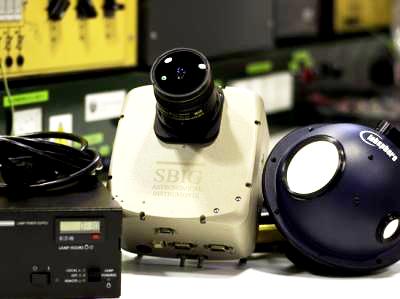By Tushna Commissariat

The newly patented all-sky camera (Courtesy: University of Granada)
Researchers in Spain have developed a small and light device that can quickly and accurately measure the light-pollution levels or artificial night-sky background brightness for a given location. The team, led by Ovidio Rabaza from the Department of Civil Engineering at the University of Granada, has developed a portable system that includes an all-sky camera and several interference filters that can be easily transported and can be used anywhere.
Currently, methods to measure light pollution that affects the night sky involve using complex techniques such as astronomical photometry, which requires large-scale and expensive equipment generally housed in observatories, according to the researchers. According to the team, the new system is “clearly innovative because, for the first time, relative irradiance and sky background luminance have been measured through wide-field images, of all the sky, instead of using more conventional methods”.
The system consists of a portable instrument and calibration system. The calibration system consists of an integrating sphere, a lamp to calibrate known spectral flux and a power source. The image-acquisition system consists of a CCD camera that comes equipped with several narrow-band interference filters and a fish-eye objective. The camera is capable of taking a full-sky image in a single exposure, with each filter focused permanently to infinity, according to the researchers.
Rabaza says that the technique “uses the radiance emitted by any calibration lamp with a known radiant flux in the interior of an integrating sphere. The sphere’s internal wall is a Lambertian surface, which ensures the light it reflects is uniformly dispersed in all directions, guaranteeing that the measure patterns are almost perfect and, therefore, the measures are very accurate.” He goes on to explain that the device can take multiband measurements, which in turn enables the team to determine the type of light source emitting the light pollution it has detected.
The group’s invention has just been patented through the university’s Office for the Transfer of Research Results, and the researchers are currently on the lookout for companies interested in developing and manufacturing both the instrument and the calibration and measuring procedure.
Guidelines
Show/hide formatting guidelines
this text was deletedwhere people live in harmony with nature and animals</q>
Some text